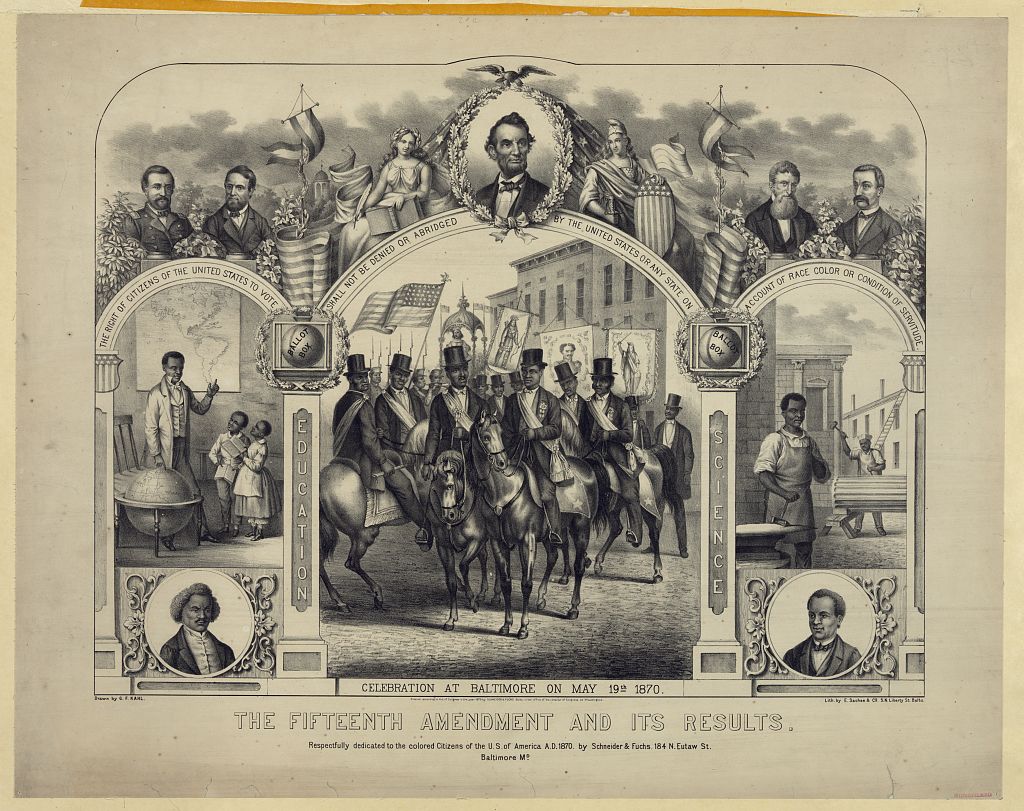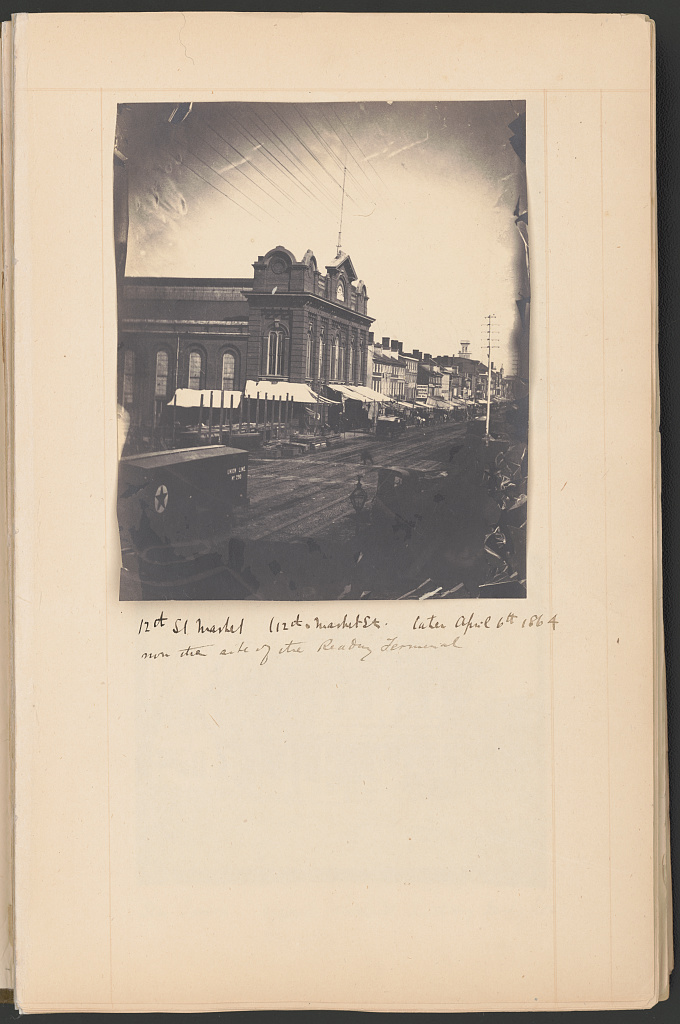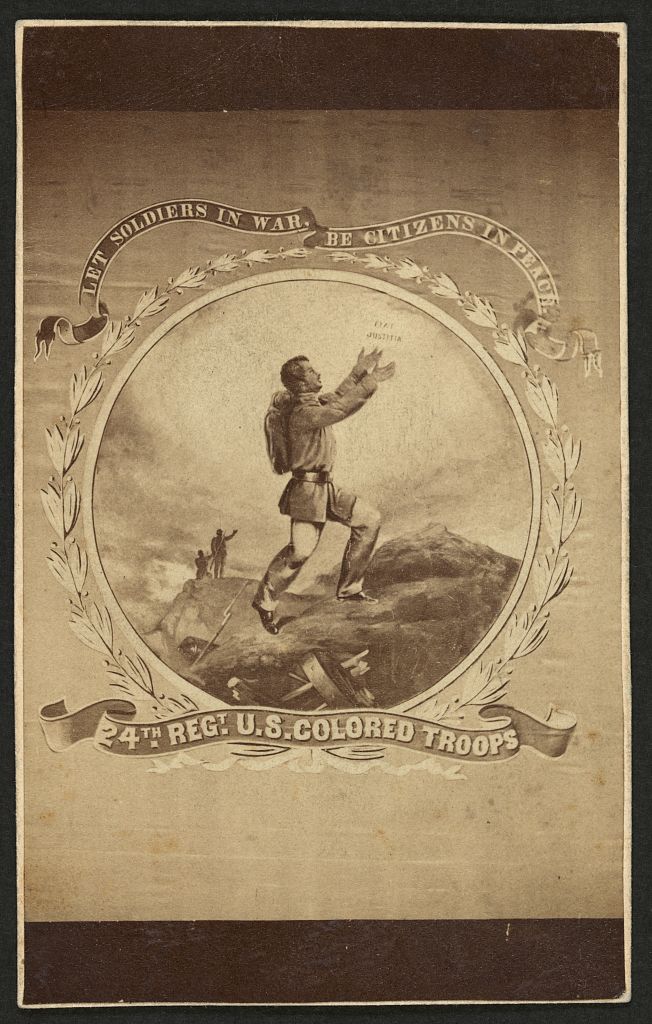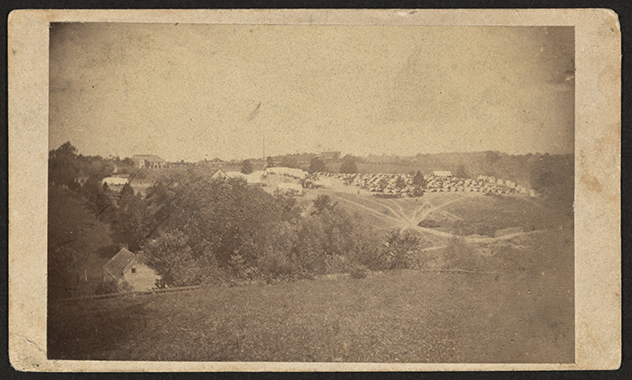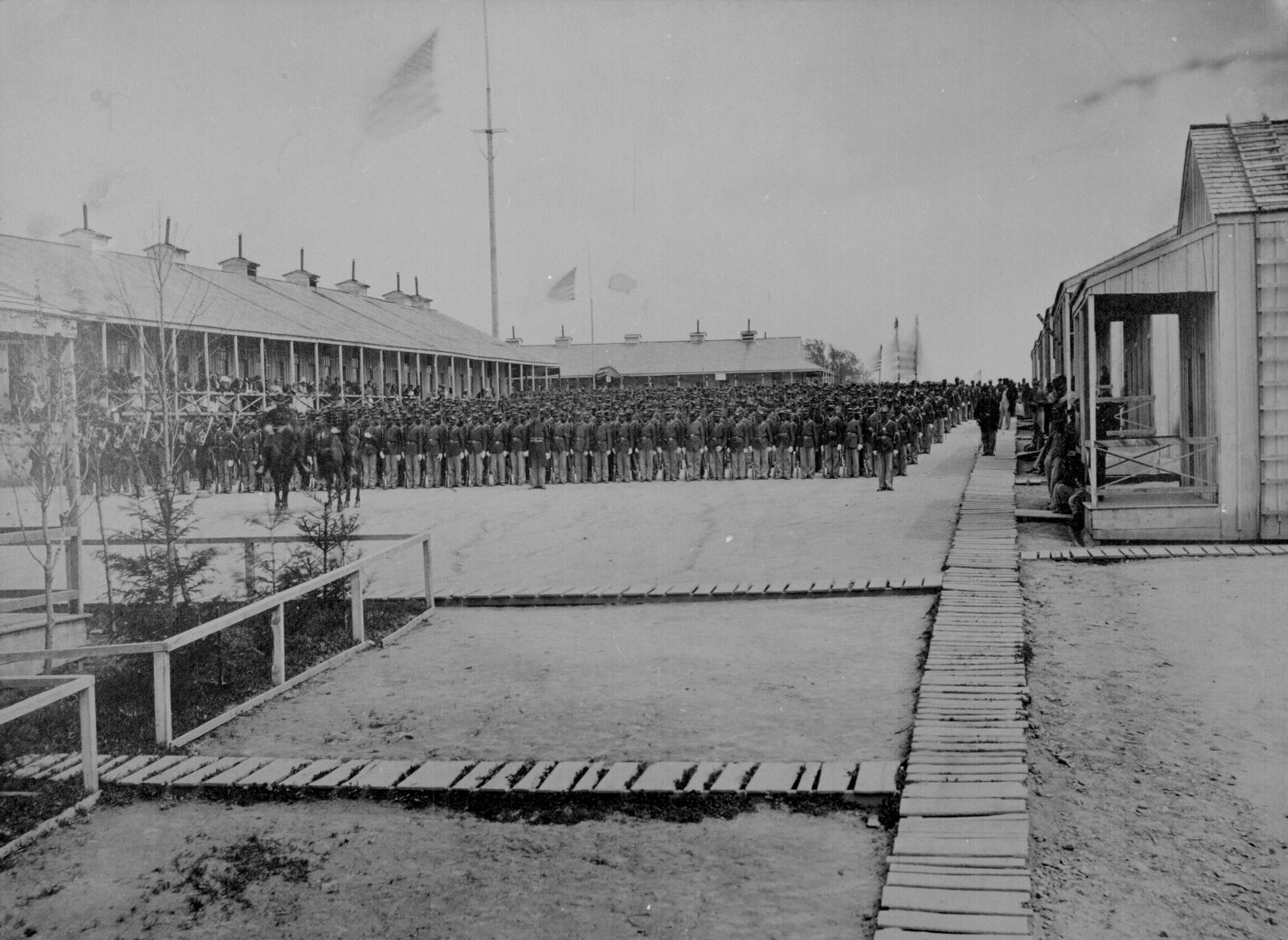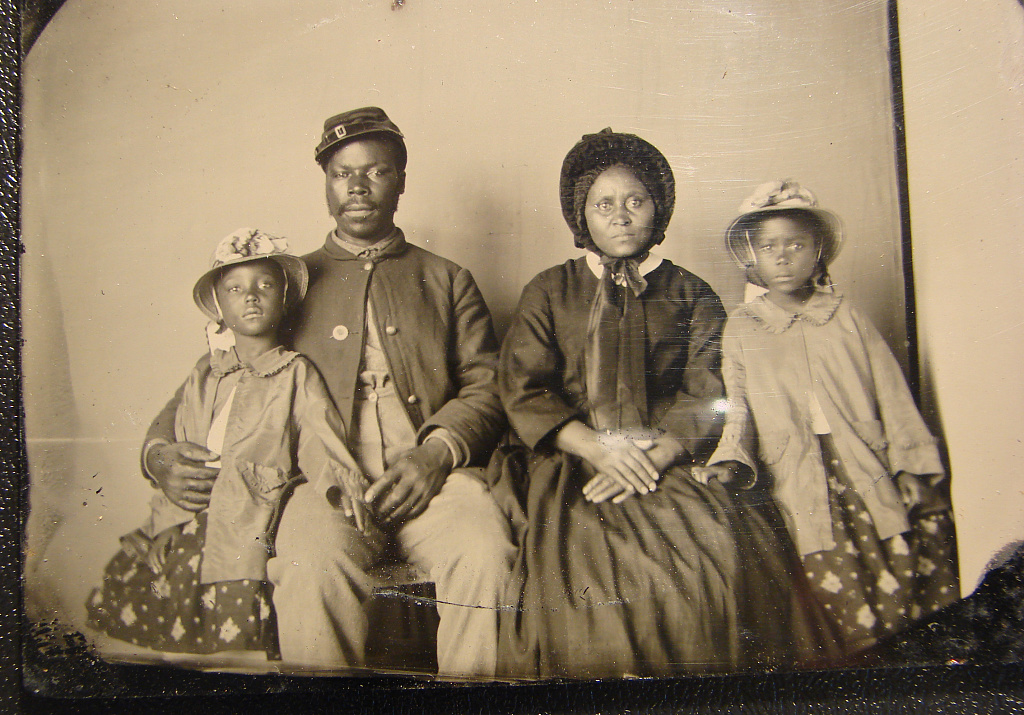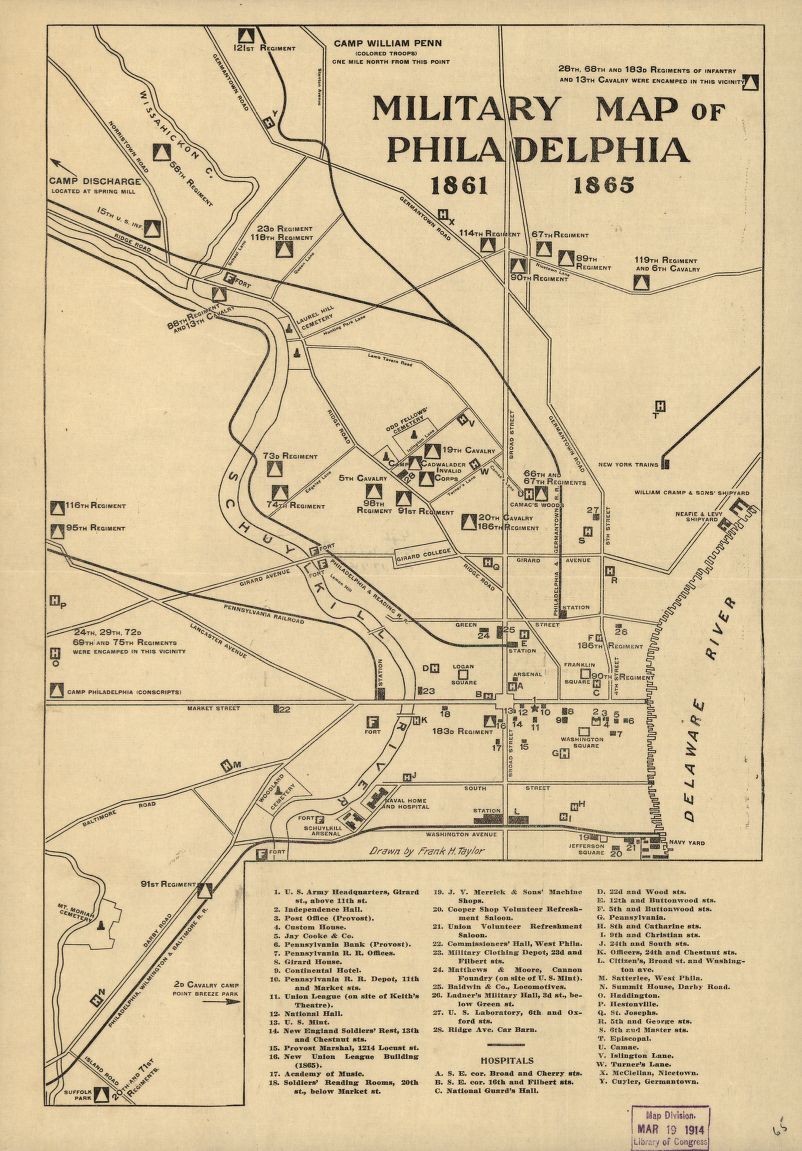I originally intended for episodes 3 and 4 to launch together. So I apologize for leaving you with such a cliff hanger over the past two weeks. I hope you’re back to find out what happens next.
I learned so much reading about Philadelphia during the Civil War. There is Frank Taylor’s encyclopedic and heavily illustrated Philadelphia in the Civil War 1861-1865. I had no idea that Philly was such a key manufacturing, transportation, and hospital hub. There are traces of the war all over the city: the remaining walls and buildings of the Schuylkill Arsenal around the Veolia plant at Grays Ferry and Washington; the few remnants at the Frankford Arsenal at Tacony and Bridge Streets; the railroad depot at Broad and Washington, which is now Sprouts Market; as well as the Union League at Broad and Sansom Streets. Seeing Philadelphia as a military hub, within a broader national network, helped me understand why the streets were redefined as circulation routes for the efficient transportation of goods and people. This was crucial for the war effort and came to define the modern city. The horse drawn streetcar happened to be the most efficient public transportation of the era.
One of the more fascinating parts of telling the story of Caroline Le Count was creating a timeline of interconnected events and seeing how they unfolded in Washington, DC, in Harrisburg, in Appamatox Court House, in Cleveland and San Francisco, and how they impacted events in Philadelphia. Historian Philip Foner was the first historian to pull together all of these different pieces of the Philadelphia streetcar integration story in the 1970s, You can read them free online or on JSTOR using your Free Library account here: Part I and Part II.
While all of these far-flung events are important to the story, the life of Le Count keeps us grounded on the streets, and in the streetcars, of Philadelphia. She and her fellow activists never lost sight of their goal, to see equal access on board all of Philadelphia’s streetcars. Wars ended, the constitution slowly changed, and state laws were written and amended, but Le Count and her network kept pushing until they saw the change in their daily lives.

G.M. Hopkins & Co. – Publisher. Map of Philadelphia [horse car routes], 1875, Map. [Transportation Maps]. Retrieved from https://libwww.freelibrary.org/digital/item/65449
Le Count and her peers present an intriguing web of connections that deserves more research. These women lived near each other, worshipped at a few select churches, attended and then taught at the same schools, listened to the same lectures, gathered for similar celebrations, and organized for social justice. There was an inner network of elite Black women, such as Le Count, and a close satellite system, which included people like Emilie Davis. If you just follow Le Count’s life, you see that she is surrounded by luminaries. Le Count is taught by Sarah Mapps Douglass; is a classmate of Dr. Rebecca Cole; is hired by, and later took over for, Cordelia Atwell (née Jennings); and is a friend and colleague of Fanny Jackson Coppin, just to name a few. There is a common thread of education linking many of these women, and we’ll dig into that some more in the final part of this trilogy.
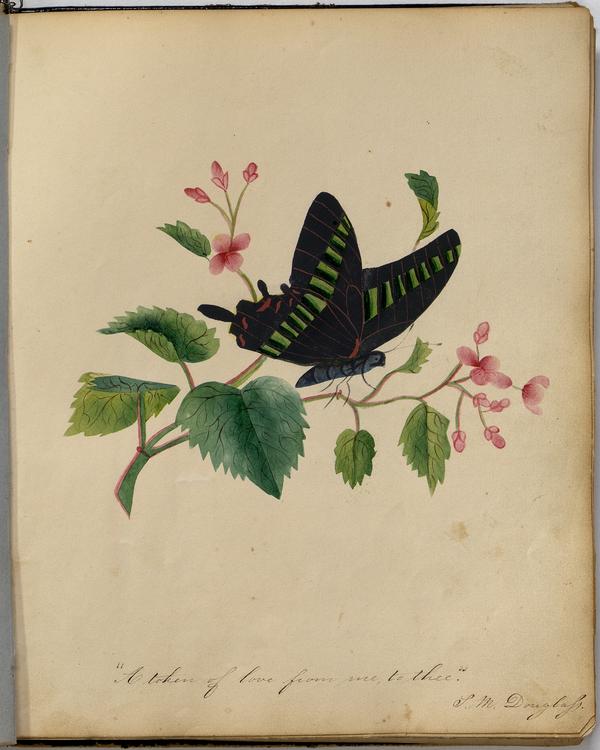
Explore this History for Yourself
And here are a few virtual places where you can go to explore this history for yourself:
You can relive some of the streetcar fight in the 2016 documentary An Equal Chance on YouTube. (NOTE: The streetcar story starts about 17 minutes in.)
LaSalle University has a gallery of images and documents where you can walk through Philadelphia during the Civil War.
The Mutter Museum’s past exhibit Broken Bodies, about Civil War medicine (which was intense), includes some great links on Civil War history in Philadelphia, including a link to the group working to save the history of Camp William Penn.
Finally, though Octavius Catto and so many others in Philadelphia’s Black community were interred at Lebanon Cemetery, many were moved to Eden Cemetery in Collingdale. However, so many who were laid to rest in Philadelphia’s historic Black cemeteries remain underground, including those buried at the Mother Bethel Burial Ground on the 400 block of Queen Street, which is now Weccacoe Playground.
And again, for those of you who love history and have time to get involved, you should consider becoming a digital volunteer with the Smithsonian at https://transcription.si.edu/. If you’re interested in this particular period of history, go to the home page and, under “Browse Projects,” click on “Freedman’s Bureau” for a list of current projects. It’s amazing how much history is available online and you can be a part of that effort.
Bibliography
Amedeo, Jonah. “O.V. Catto Secondary School.” Octavius V. Catto. The Independence Hall Association. No date. Website: https://catto.ushistory.org/catto_maps/o-v-catto-secondary-school/
“Amusements.” Evening Star. April 5, 1882: 8.
An Equal Chance series, 2016. Website: https://www.youtube.com/watch?v=MxV5Ap19Ae0 (NOTE: Streetcar story starts about 17 minutes in.)
“Annual Report of the Managers of the Institute for Colored Youth, (Lombard St., Phila.)” Friends Review: A Religious, Literary and Miscellaneous Journal. Vol. 16 (1863): 730-732, 748-749.
Bacon, Benjamin C. Statistics of the Colored People of Philadelphia. Philadelphia, PA: Board of Education of the Pennsylvania Society for Promoting the Abolition of Slavery, 1859.
Bagley, W. School Discipline. New York: Macmillan, 1915.
Baldwin, Peter C. Domesticating the Street: The Reform of Public Space in Hartford, 1850-1930. Columbus, OH: Ohio State University Press, 1999.
Biddle, Daniel R. and Murray Dubin. Tasting Freedom. Website:http://tastingfreedombook.com/
Biddle, Daniel R. and Murray Dubin. Tasting Freedom: Octavius Catto and the Battle for Equality in Civil War America. Philadelphia, PA: Temple University Press, 2010.
Cheape, Charles W. Moving the Masses: Urban Public Transit in New York, Boston, and Philadelphia 1880-1912. Cambridge, MA: Harvard University Press, 1980.
“Commencement Exercises of the Institute for Colored Youth.” The Press. May 11, 1863.
Coppin, Fanny Jackson. Reminisces of School Life, and Hints on Teaching. Philadelphia: AME Book Concern, 1913.
Custis, John Trevor. The Public Schools of Philadelphia: Historical, Biographical, Statistical. Philadelphia: Burk & McFetridge Co. Publishers, 1897.
Diemer, Andrew. “Reconstructing Philadelphia: African Americans and Politics in the Post-Civil War North.” Pennsylvania Magazine of History and Biography, vol. 133, no. 1 (January 2009): 29-58.
Du Bois, W. E. B. The Philadelphia Negro: A Social Study. Philadelphia, PA: University of Pennsylvania Press: 1899.
Emilie Davis’s Civil War: The Diaries of a Free Black Woman in Philadelphia, 1863–1865. Ed. Judith Giesberg. State College, PA: Penn State Press, 2014.
Foner, Eric. Gateway to Freedom: The Hidden History of the Underground Railroad. New York: W.W. Norton & Co., 2015.
Foner, Philip S. “The Battle to End Discrimination Against Negroes on Philadelphia Streetcars: (Part I) Background and the Beginning of the Battle.” Pennsylvania History: A Journal of Mid-Atlantic Studies, vol. 40, no. 3 (July 1973), pp. 261-290.
Foner, Philip S. “The Battle to End Discrimination Against Negroes on Philadelphia Streetcars: (Part II) Background and the Beginning of the Battle.” Pennsylvania History: A Journal of Mid-Atlantic Studies, vol. 40, no. 4 (October 1973), pp. 355-379.
Gates, Henry Louis, Jr. Life Upon These Shores: Looking at African American History, 1513-2008. New York: Alfred A. Knopf, 2013.
Giesberg, Judith. Army at Home: Women and the Civil War on the Northern Homefront. Chapel Hill, NC: The University of North Carolina Press, 2009.
Glenn, Myra C. “School Discipline and Punishment in Antebellum America.” Journal of the Early Republic, vol. 1, no. 4, 1981, pp. 395–408.
Grubbs, Patrick. “Riots (1830s and 1840s).” The Encyclopedia of Greater Philadelphia. Mid-Atlantic Regional Center for the Humanities (MARCH) at Rutgers-Camden, 2015. Website https://philadelphiaencyclopedia.org/archive/riots-1830s-and-1840s/
Hammack, David C. “Comprehensive Planning before the Comprehensive Plan: A New Look at the Nineteenth Century American City” in Two Centuries of American Planning. Danial Schaffer ed. Baltimore, MD: John Hopkins University Press, 1988: 139-165.
Hayashida-Knight, Christopher H. “Sacrifices and Sufferings of True Americans”: Black Women’s Nationalism and Activism in Philadelphia, 1863-1901. Dissertation. The Pennsylvania State University The Graduate School College of Liberal Arts. 2017.
James, Milton M. “THE INSTITUTE FOR COLORED YOUTH.” Negro History Bulletin, vol. 21, no. 4, 1958, pp. 83–85.
Jones, R.B. “To Carrie.” The Christian Recorder, May 30, 1863.
Kahan, Michael. Pedestrian Matters: The Contested Meanings and Uses of Philadelphia’s Streets, 1850s-1920s. Dissertation. University of Pennsylvania. 2002.
Kendi, Ibram X. Stamped from the Beginning: The Definitive History of Racist Ideas in America. New York, NY: Bold Type Books, 2016.
Lapsansky, Emma Jones. “Friends, Wives, and Strivings: Networks and Community Values among Nineteenth-Century Philadelphia Afroamerican Elites.” The Pennsylvania Magazine of History and Biography, vol. 108, no. 1, 1984, pp. 3–24.
McShane, Clay, and Joel A. Tarr. The Horse in the City: Living Machines in the Nineteenth Century. Baltimore, MD: The John Hopkins University Press, 2007.
Memorable Days: The Emilie Davis Diaries. Villanova University. Website. https://davisdiaries.villanova.edu/may_7-9_1863/
New National Era Newspaper:
“Color Prejudice.” New National Era, May 22, 1873.
“Interview with Caroline R. Le Count.” New National Era, May 33, 1873.
“Letter from Philadelphia.” New National Era, June 5, 1873
The North American, Philadelphia Newspaper:
“May the Teacher Whip the Child?” The North American, Philadelphia. July 1, 1899: 3.
“Pupil Sues Her Teacher.” The North American, Philadelphia. June 28, 1899: 3.
“Teachers Have No Right to Whip Their Pupils.” The North American, Philadelphia. June 29, 1899.
“Philadelphia Anniversary.” The New York Age. October 4, 1890: np.
The Philadelphia Community Education Plan: Excellent Schools For All Children. Philadelphia Coalition Advocating for Public Schools, 2016. Website: https://wearepcaps.files.wordpress.com/2013/01/pcaps-lo.pdf
Philadelphia Court of Common Pleas No. 3, Vol. June 1899, Docket No. 268, pg. 133, Philadelphia City Archives.
Philadelphia Quarter Sessions Court, Vol July-Aug 1867, Docket No. 209, pg. 257, Philadelphia City Archives.
Philadelphia Inquirer:
“A Colored School Principal.” The Philadelphia Inquirer, August 25, 1891.
“Amicable Adjustment.” Philadelphia Inquirer. May 12, 1873.
“Another Branch.” Philadelphia Inquirer. April 5, 1873.
“Centennial.” Philadelphia Inquirer. April 14, 1873.
“Centennial.” Philadelphia Inquirer. May 23, 1873.
“Patriotic Women at Work.” Philadelphia Inquirer. April 21, 1873
“The Radical Club.” Philadelphia Inquirer. May 8, 1873.
“Radical Club.” Philadelphia Inquirer. June 5, 1873.
“Women in the Centennial.” Philadelphia Inquirer. April 1, 1873.
“Women’s Centennial.” Philadelphia Inquirer. May 13, 1873.
“Quaker City Items.” The New York Globe. December 29, 1883
Rooks, Noliwe. Cutting School: Privatization, Segregation and the End of Public Education. New York: The New Press, 2017.
Speirs, Frederic W. The Street Railway System of Philadelphia: Its History and Present Condition. Baltimore, MD: The Johns Hopkins Press, 1897.
Taylor, Frank H. Philadelphia in the Civil War 1861-1865. Yardley, PA: Westholme Publishing, Reprint from 1913.
“The Ward: Race and Class in Du Bois’ Seventh Ward Walking Tour.” DuBois-The Ward. Website. http://www.dubois-theward.org/resources/walking-tour/
Warner, Sam Bass. The Private City: Philadelphia in Three Periods of Its Growth. Philadelphia, PA: University of Philadelphia Press, 1968.
Whitehead, Karsonya Wise. Notes from a Colored Girl: The Civil War Pocket Diaries of Emilie Frances Davis. Columbia, SC: University of South Carolina Press, 2014.
Wickersham, James Pyle. A History of Education in Pennsylvania. Lancaster, PA: Inquirer Publishing Company, 1886.
Woodson, Carter Goodwin. The Education of The Negro Prior To 1861: A History of the Education of the Colored People of the United States from the Beginning of Slavery to the Civil War. Washington, DC: The Associated Publishers, Inc., 1919.
Woodson, Carter Goodwin. The Mis-Education of the Negro. 1933, Reprint by ClearWords.org, 2017.
Wright, Wittier H. “Life in Philadelphia.” The Statesman (Denver, Colorado). February 25, 1911: 2.
Zylstra, Geoff D. “Whiteness, Freedom, and Technology: The Racial Struggle over Philadelphia’s Streetcars, 1859—1867.” Technology and Culture, vol. 52, no. 4, 2011, pp. 678–702.
